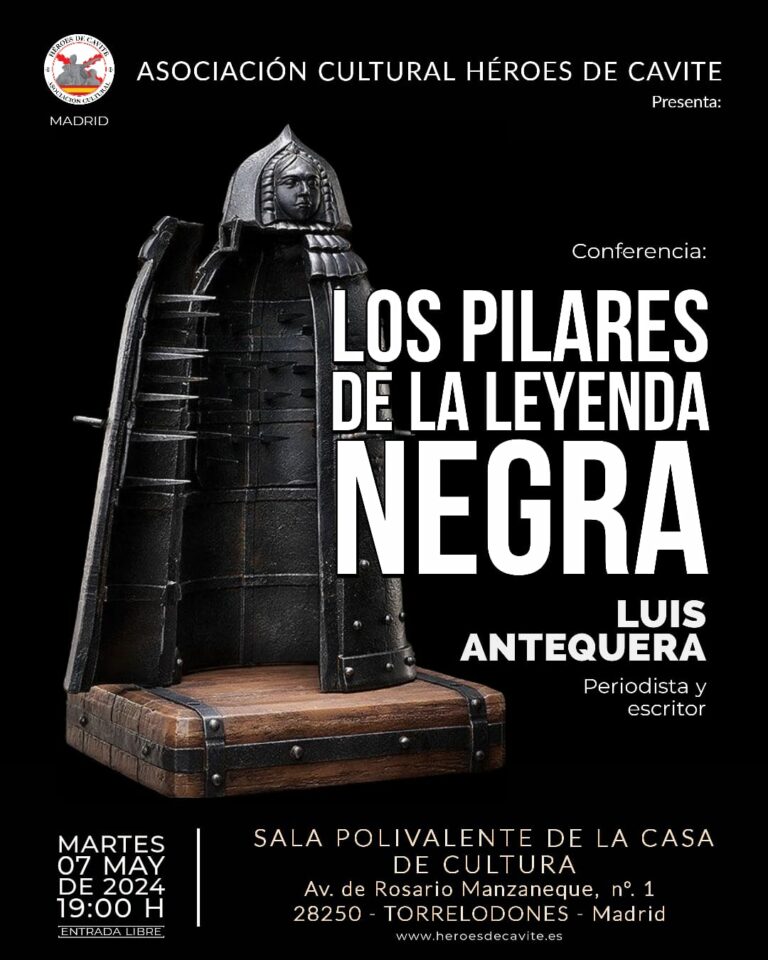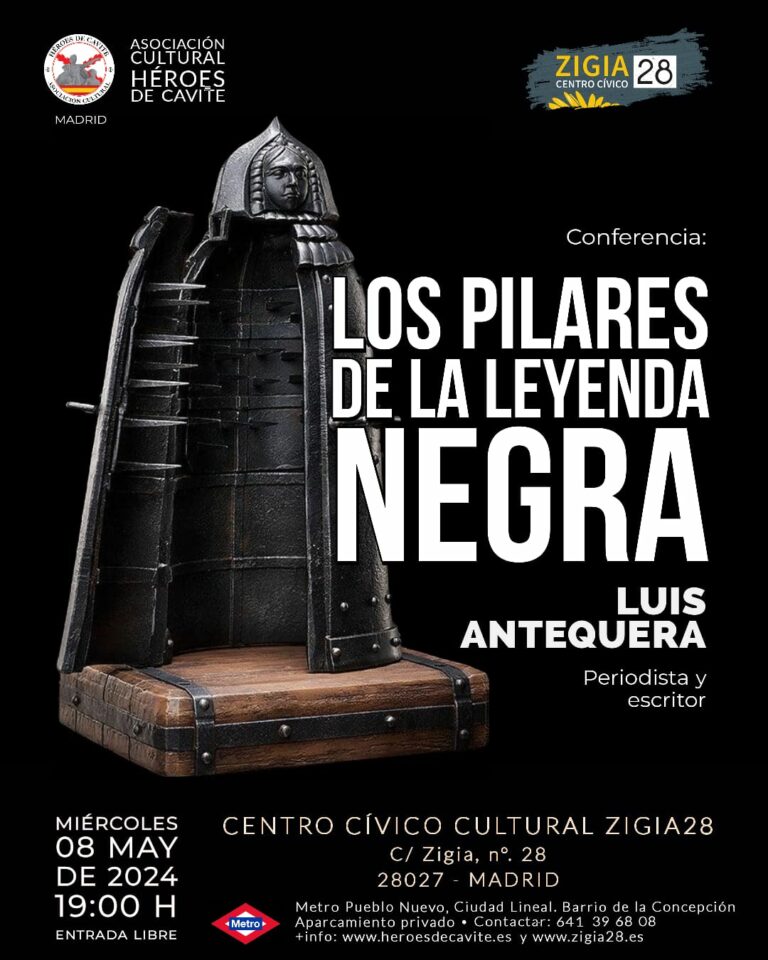Puedes leer esta página en español aquí
When someone begins to stand out in some area of life – political, social, or economic – or threatens to dominate a market or a sector, their competitors or those adversely affected by it counterattack, including campaigns to discredit them. The Hispanic Empire threatened to become hegemonic in Europe, in the seas, and in the world. It was the first global empire with a presence on the five continents. In the times of the Habsburgs, it dominated southern Italy, the Netherlands, Belgium, (Spain itself), Portugal and considerable parts of present-day France, all of Central and Southern America, most of the western and southern territories of the current United States, the Philippine islands, Madeira, Azores, Cape Verde, the Congo, Angola, Ceylan, Borneo, New Guinea, Sumatra and the Maluku islands (Indonesia), in addition to numerous settlements in the Asian continent and other islands.

Alberto Gil Ibañez
The Black Legend was the first case of planned and autonomous cultural war. There were other previous campaigns, but none so widespread and with a strategy that has continued to the present day. It was logical that the Hispanic Empire was the target of negative propaganda from its competitors, since they did not beat it in the field of formal battle because the Tercios (army) ruled on land and the Armada dominated the sea. Therefore a fierce cultural war was raised, full of hoaxes, false images and stereotypes of great impact, enhanced by the creation of the printing press, to manipulate public opinion.
The anti-Hispanic propaganda strategy began in Italy aimed at the first Catalans who appeared there, accused of being dirty (pigs), impure of faith as well as greedy. However, it ended up affecting everyone because the Catalans were already considered Spanish in the 15th century, as Farinelli points out: «Da un lembo de la Spagna, dalla Catalogna, a noi più vicina, giudicavisi l’intero paese» (from a corner of Spain, Catalonia, which is closest to us, the entire country can be judged). It would be consolidated as an organized campaign from the 16th century onwards in the Netherlands, England, where the role of Francis Bacon as the queen’s advisor was fundamental, and France. It had two main targets: the Spanish kings and the Catholic religion that they defended.
Europe acted mainly out of jealousy, but the Arab world also showed a desire for revenge against Queen Isabel and King Fernando, who had defeated them, preventing them from holding Granada and attacking Europe again from the west and completing what the Ottoman Empire had achieved from the east with the fall of Constantinople. Instead of showing eternal gratitude to Spain for having saved [Europe] from Arab rule (something that will be achieved again in the Battle of Lepanto), the French claimed that we hadn´t contributed anything relevant to the world and the Protestant-Anglicans put all their effort into destroying us.
The result was the discrediting of the Hispanic world and the rupture of Christianity with the birth of national churches aimed at sustaining the (absolute) power of the new sovereigns, freeing them from the uncomfortable «control» of Rome. In 1568, Arts of the Inquisition by Reinaldo González appeared in Dutch, English, French and German. In 1578 the first two Dutch editions of De Las Casas were published, with alterations that replaced, for example, the word «Christians» with the word «Spanish». In 1581 Apology of the Prince of Orange was published, focused on denigrating the figure of Philip II and the Inquisition. The drama Don Carlos by F. Schiller, premiered in 1787, and Giuseppe Verdi’s opera of the same name (1867), a century later, consolidated that popular imagination.

Poster of the movie The Pope’s Exorcist, a film that oozes Black Legend.
However, it is worth asking why the Black Legend spread beyond the survival of the Spanish Empire. The new colonial empires soon realized that the Spanish-phobic black legend served as an excellent smokescreen and «scapegoat» to hide their own mistakes and horrors, which, in many cases were in fact much more terrible. Thus, exaggeration and double standards were installed: while some Spanish figures were demonized by exaggerating their flaws or formulating false accusations of savagery, the dark side of the leaders of the accusers and their allies was hidden. The use of cruel and false illustrations was significant. These illustrations that decorated the books about Spain, which were published in the Netherlands, France and England, where images of grilled children or inmates subjected to multiple torture (e.g. those of the Belgian Theodor de Bry that were published as a separate booklet).
Subsequently, given its success, the United States and the Soviet Union also used it for geostrategic reasons in America. Even recently, as Marcelo Gullo points out, the communist Cuba and the chavismo in Venezuela has resurrected the black legend to maintain or recover power, once the class struggle was dead, although it essentially benefits the cultural imperialism of the Anglosphere. The Sao Paulo Forum, created in 1990 after the fall of the Berlin Wall, has a transoceanic indigenist (anti Spanish/pro black legend) focus to regain power, through a culture of hatred, following the path marked by Gramsci. The Sao Paulo Forum used the work that universities from the US have already been doing, in a similar sense, since the 1960s. Interestingly, it´s in those same universities where the «woke» doctrine began to take shape.
The black legend is therefore not a thing of the past. It is still in force because the two large blocs that currently dispute for geopolitical power, are not at all interested in having a third bloc that could possibly disrupt the international chess board. So, it’s time to ask yourself: Cui Prodest?
Note: The Sao Paulo Forum promotes political indigenismo from a separatist/nationalistic and even racial perspective and with a negative view of the history of the Spanish Americas from 16th to 19th centuries, when actually the mestizaje (the merging of cultures & ethnicities regardless of race that was promoted by the Spanish Crown throughout) was and still is an essential part of Hispanidad.

















